The content of the article
Today, bushes of red currant can be found in the garden of almost every summer resident. This amazing berry is quite unpretentious - it survives drought and frost perfectly, bears fruit for many years, stretching its branches and annually increasing the splendor of the bush. The bush of red currant looks very beautiful - berries, like beads, are decorated with sprawling branches with green leaves. That is why red currants were originally grown as an ornamental plant. In the future, people realized that the berries and leaves of the shrub have a medicinal effect, they began to use the plant in a variety of decoctions and tinctures. Only in recent centuries have people tasted the true taste of sour berries. Today, red currant is a standard of delicious and incredibly healthy goodies, not for everyone, but for everybody. In this article we will talk about the composition of red fruits, find out how currants are useful, what diseases it is worth using, and also get acquainted with the main contraindications to the use of currants.
Useful properties of red currant
The composition of red currants is very diverse. It is often compared to blackcurrant, however, these berries have many differences. Firstly, red currant is more juicy, it has more seeds. There are a lot of vitamin C in red and black currants, but black still benefits in the amount of ascorbic acid. But there is so much vitamin A in red currant that not a single berry compares. In addition, the composition of red fruits contains organic acids, vitamins, beta-carotene, trace elements. Red currant contains less sugar than black, so it is actively used for weight loss. In general, a special sour taste of currant gives a delicate aftertaste to baking and desserts. In many countries, currants are used for fruit drinks, compotes, jams, and preserves. But how is red currant useful for the body?
- Vitality. Very often, vitamin deficiency, previous diseases, autumn depressions and frequent stresses make themselves felt, strength goes away, vitality is lost. Redcurrant will help to rectify the situation. A decoction is prepared from its berries and leaves, which should be taken at least three times a day. Very often, natural medicines from redcurrant are prescribed for older people during the rehabilitation period. The medicine is very useful for mental and physical exertion. Such decoctions quickly return a person to life and give him strength.
- SARS and colds. A large amount of ascorbic acid makes currants indispensable in the fight against colds. Currant fruit drinks and compotes significantly reduce the time of the disease, have a diaphoretic and antipyretic effect, relieve inflammation. Gargle with diluted currant juice - this will relieve pharyngitis, tonsillitis, etc. In addition, regular consumption of currants in the flu and colds season is a powerful prevention and protection of the body, strengthening the immune forces.
- For heart and blood. The currant contains a sufficient amount of potassium, which is very necessary for the work of the heart muscle. Currants thin the blood, prevent blood clots, and reduce the risk of developing atherosclerosis. Regular consumption of currants allows you to get rid of edema, normalize blood pressure and reduce the risk of heart attack and stroke.
- Oncology. Of course, you can’t get rid of cancer cells with currants, but to prevent their appearance is quite real. Scientists confirm that a large number of antioxidants in the composition of currants reduces the risk of oncology, slows the growth of metastases.
- For the intestines. Currant has a soft laxative effect, perfectly cleanses the intestines, eliminates toxins and toxins, this is an excellent medicine against constipation. In addition, the antiseptic properties of currants can destroy the entire pathogenic microflora in the intestines, saving a person from bloating, flatulence and fermentation.
- From nausea. Red currant perfectly suppresses the feeling of nausea, reduces vomiting. It is useful in food poisoning, but currants are considered particularly effective in the treatment of toxicosis of pregnant women. Just a couple sips of currant juice will help you get rid of the exhausting feeling of nausea in the morning.
- For blood. Regular consumption of currants stimulates the production of blood, increases hemoglobin, solves the problem of anemia. Redcurrant fruit drinks are an indispensable part of rehabilitation in the postoperative period, after heavy blood loss. Currants are also recommended for use during menstrual bleeding.
- For sight. Currants contain a lot of vitamin A, which is simply necessary for vision, especially for children. Large loads in the form of school lessons and additional classes lead to a gradual decrease in visual acuity, currants are a powerful prevention of eye diseases.
- Cystitis. The composition of red currant has many components that together give a real anti-inflammatory effect. Berries are often used in the fight against cystitis. Drink diluted currant juice in large quantities, and frequent urges, pains and pains will pass in a day.
- Losing weight. Redcurrant has a low glycemic index. This means that sugar from the product is absorbed into the blood slowly, there is no powerful release of insulin. This means that currants perfectly dampen hunger, after which you do not feel hungry for a long time. In addition, it has very few calories, which makes the product ideal for the diet of a losing weight person. Drinks with redcurrant juice are often given to athletes to burn fat, restore strength, build muscle.
This is not a complete list of the beneficial properties of red currant. It is effective in many diseases, it must be stocked up in the summer, in order to be fully armed in the winter and fight back any diseases. In order to preserve the maximum amount of nutrients in the berry, it cannot be boiled - only frozen. At high temperatures, vitamin C is destroyed, so currant jam does not contain as many valuable components as fresh berries. It is best to chop the currants, add sugar, mix and transfer into plastic containers. In this form, the treat will turn out to be incredibly tasty and will retain all its useful properties. However, red currants are used not only to maintain health.
Redcurrant in cosmetology
The high content of various nutrients in the composition of red berries allows the use of currants for facial skin care. Ascorbic acid heals wounds, disinfects the surface of the epidermis, effectively fights against various acne and inflammation. Currants relieve swelling, redness, and soothe sore and irritated skin. Acids in the composition of currants gently corrode the upper stratum corneum of the skin, creating the effect of chemical peeling. A large amount of vitamin A in the composition of currants stimulates the production of collagen and elastin, giving a powerful impetus to tissue regeneration. This allows the use of currants as an anti-aging anti-wrinkle remedy. Currants have vitamin B9, which is appreciated by cosmetologists for their protective functions. That is, with the regular use of currant masks, a thin invisible barrier appears on the skin, which protects the epidermis from ultraviolet radiation, external negative effects - chlorinated water, wind, dry air, frost, etc. Another powerful berry action is the whitening effect.With a handful of red currants, you can get rid of freckles, age spots, unwanted tans or dark skin tones. Currant acts gently, leaving the face skin bright, light, ruddy and radiant, without yellow pigment.
Redcurrant masks gently moisturize and nourish the skin. This property is used in hand skin care. To do this, redcurrant juice is simply added to the usual hand cream, you can even use baby fat cream. Apply the product on your hands and feet, you can get rid of cracks and dryness. Diluted juice of red currant is actively used as a hair rinse - this will get rid of dandruff and seborrhea, loss of strands. Organic acids in currant juice soothe irritated scalp, relieve itching and inflammation. If you use red currants to treat curls constantly, your hair will become smooth, shiny, healthy. Moreover, you can achieve a change in shade - in the sun, the strands will shimmer with a reddish tint.
Contraindications to taking redcurrant
Despite all the useful properties of currants, it still has some contraindications, which you need to know in advance.
- The berry is quite acidic and in some cases can cause irritation of the gastric mucosa. Redcurrant is undesirable for use in gastritis and ulcers, especially on an empty stomach.
- Since currants thin the blood, it should not be used with low blood coagulability - the situation may worsen.
- With liver disease and hepatitis, currants should be discarded. Also, currants should not be used for pancreatitis, since acids stimulate the production of enzymes and enhance the functioning of the pancreas.
- If you have a weak intestine, prone to diarrhea, you need to refuse redcurrant, or use it in small quantities.
- External use of red currant is contraindicated if there are wounds, injuries, abrasions on the skin. Acids will corrode the epidermis and you will feel an unbearable burning sensation. Moreover, irritation may begin on the wound.
- In diabetes mellitus, red currants should be consumed in small quantities, with caution and only after the permission of the doctor.
In addition to all this, a person may experience individual intolerance to the berry. To check for allergies, start eating a little currant, monitoring the cleanliness and condition of the skin. You should also apply a little currant juice to the skin before you use a face or hair mask.
Anyone who has a summer cottage or at least a piece of land, will certainly plant a bush of red currant on it. The shrub takes root well, grows for a long time and bears fruit up to 10-14 years. A bush of currant will decorate any territory, give tasty and juicy berries. And most importantly, it is a source of health, strength and longevity. Each time, when brewing tea, add a leaf of red currant to the teapot along with brewing. And illnesses just forget the way to your home!
Video: healing properties of red currant

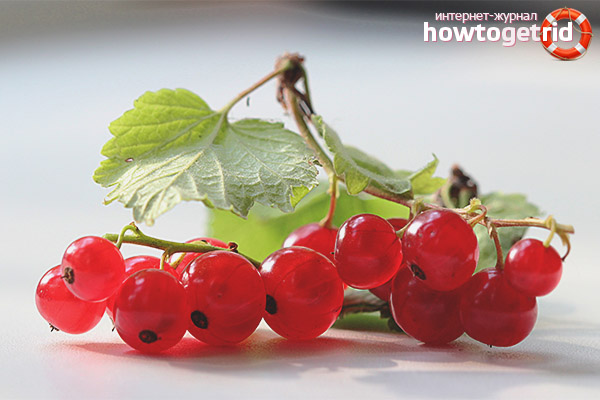
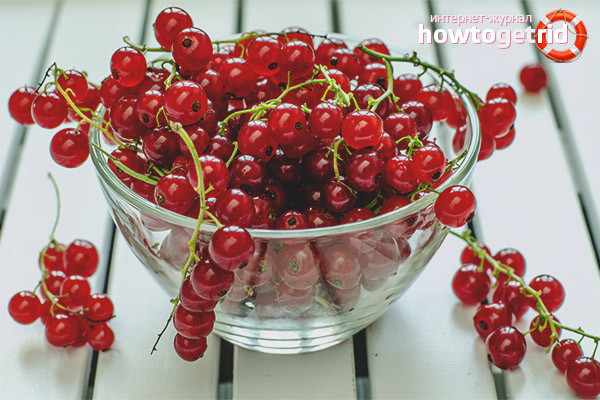
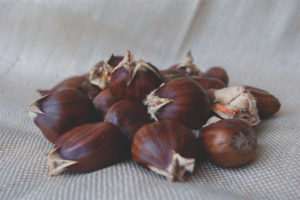
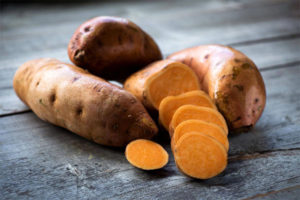
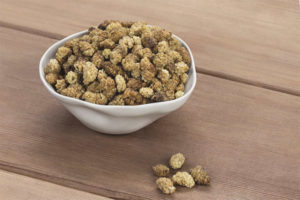


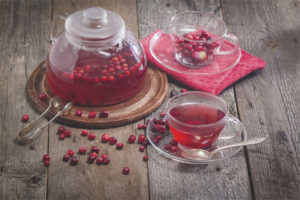
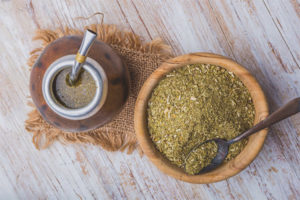
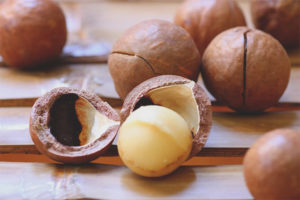
Submit